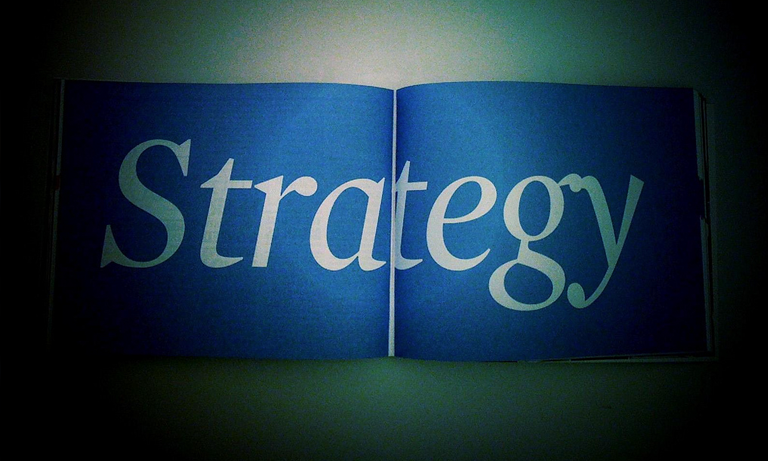 It takes recruiters an average 29 days to fill a position. Top talent, however, stays on the market an average of only 10 days
It takes recruiters an average 29 days to fill a position. Top talent, however, stays on the market an average of only 10 daysThe Internet has become the best way to post jobs and vet applicants, especially when you’re looking to hire among younger generations, such as millennials. But what about Gen X, Baby Boomers, and now Gen Z?
In this article, we will get answers on recruitment strategies from small business owners like yourself, HR professionals, recruiters, and other hiring managers on the top 25 recruitment strategies to arm yourself with to get the best talent.
Strategy 1: Use Indeed to Hire for Remote Jobs
Marc Prosser, FitSmallBusiness
When you use Indeed to hire remotely, not only does the cost go down significantly, the amount of interested jobseekers increases by a large amount as well. As you can see in the chart below, the amount of remote job postings has virtually stayed the same over the past several years, while the interest from jobseekers continues to rise. Be sure to take advantage of this opportunity with a free $50 credit to post your job on Indeed.
Strategy 2: Hire Talent Faster by Speeding up Your Pipeline
Ryder Cullison, Hire Intelligence
It takes recruiters an average 29 days to fill a position. Top talent, however, stays on the market an average of only 10 days. This means you could be missing out on ideal, qualified candidates because of your lengthy hiring process. In this article, Ryder Cullison discusses the pros and cons to speeding up your next hire.
Strategy 3: Use LinkedIn Correctly
Allison Hernandez, lotus823
What has been most useful at lotus823 is LinkedIn. I am able to utilize my network as well as the network of my current employees to connect with potential candidates (by using advanced search options). I can easily see their experience through their LinkedIn profile and identify shared connections.
Our pro tip: You can get 1 month of LinkedIn Premium and LinkedIn RecruiterLite free, which gives you InMails that you can send to potential candidates to inform them of your open role. Try the free trial if you are in heavy recruiting mode to see if it’s worth the monthly fee (around $50 for Premium, around $140 for RecruiterLite).
Strategy 4: Set Up a Creative Referral Program
When Carmax needed to add a lot more employees during their busy season, they conjured a simple way to encourage referrals: At a time when Livestrong bracelets were all the rage, they passed out rubber bracelets of their own to employees. The bracelets read “Carmax: Who do you know?” This served as a subtle-yet-effective reminder to employees that they can always recommend their friends
Our pro tip: Reward your referrals. A common practice is that once a referral stays 60-90 days, the employee who referred them gets a bonus like $1000. We here at Fit Small use this very technique as well as one of our recruitment strategies!
Strategy 5: “Brand” Your Business to Candidates
John Sullivan, DrJohnSullivan.com
“Employer Branding” is the image you create of your business to potential candidates. Unlike product branding, which is consumer-facing, employer branding shows what it’s like to work at your business. In this article, John Sullivan explains the importance of employer branding and creating measurable goals to test it.
Our pro tip: Answer your reviews on Yelp, Glassdoor, and other review sites. This will be especially important if you are hiring younger employees who check these sites before they even apply!
Strategy 6: Use niche job boards that fit your company
Emily Lonigro Boylan, President, Lime Red Studio
I’m a B Corporation, which means I have a triple bottom line, in addition to profits, we also look at our benefit to the community and the environment as part of our legal structure. A lot of people, not just millennials, want to do work that is meaningful, and our Certified B Corp status proves that we do that kind of work. When I advertise, I only advertise in very small niche sites, like authentic jobs.com or AIGA.org or someplace like that.
Our pro tip: Check out our top 59 job posting sites article to get some more ideas on where to post.
Strategy 7: Hire mid-career professionals that other companies don’t consider
Sebastien Dupéré, Owner, President & CEO, Dupray
Why [we] hire midcareer professionals:
They started working during the technological era, but don’t rely on it. Most midcareer professionals started their careers just at the cusp of massive technological advancement. They understand how the technology works, and they use it efficiently. Microsoft Word, Excel, CRMs and ERPs? No problem! However, they don’t RELY on technology like the millennial generation.
Strategy 8: Use targeted job campaigns
Bill Kasko, President and CEO, Frontline Source Group, Inc.
Baby boomers tend to follow a more traditional approach. More direct phone calls, full job descriptions, and a “standard” interview process is what the boomer generation is comfortable working through. This group wants face to face interaction whenever possible. At the other end of the spectrum, you’ll find the millennial generation. Millennials are open to new forms of contact. You can text a millennial and carry on through the recruiting process very easily. Social media plays a greater role in recruiting in this age group too.
When advertising new positions, traditional job boards will help recruiting find the Boomers and Gen X more easily. For up and coming careers, social media needs to be more integrated in the search process.
Our pro tip: This is absolutely true! Target your job campaigns for your end hire and remember who is reading on the other side. Remember a recruitment strategy is just that- be strategic!
Strategy 9: Use social media for recruiting
Perry Oostdam, CEO and cofounder, RecruiteeHR
In Perry Oostdam’s experience, posting jobs on job boards was futile. Millennial workers don’t always check job boards. They do check Facebook, Instagram, Twitter. They hang out there every moment they have. So what we have done is making (paid) Facebook and Instagram ads with recruiting content. The ads worked very well. We saw a spike in applicants coming in in just a few days.
Our pro tip: This tip is talking about using targeted advertising on social media, but you can also post there too, which we talk about below.
Strategy 10: Startups Should Use Different Strategies
Jenna Luthy, DNA Talent
Recruiting for a startup requires a drastically different strategy than recruiting for an established company. For one, your candidates need a lot of passion for the business, to sustain them along what may be a bumpy road. In this article, Jenna Luthy explains the types of strategies you should undertake differently as a startup.
Our pro tip: I’ve seen startups put a lot of “junk” in job ads to get applicants, including equity promises. Don’t make promises you can’t (or shouldn’t) keep and keep it to the point- no matter how cool the team is, you still need to also include what exactly your new hire will be doing (over just the awesome environment).
16 Recruitment Strategies from Our Own HR Expert:
Strategy 11: Use Indeed’s Resume Search Tool
Using Indeed.com, you can search millions of up-to-date resumes for free. You can easily filter to view candidates with certain skills or qualifications, and by the zip code near your office. Indeed makes it easy to contact resumes you like, and charges $1 per resume contacted. You can read more about it on our full guide How to Use Indeed Resume Search.
Strategy 12: Create a “Jobs” or “Careers” Page on Your Website
If you have a skilled web designer, or know how to add a page to your website yourself, adding a Careers page is not a bad idea, especially if you are constantly recruiting for the same positions over and over like a cafe or retail store. You can then learn how to optimize your Careers page in this article to get picked up by Indeed and other job boards.
Strategy 13: Try Job Fairs
Yes, job fairs still exist. Check out EventBrite and other city-specific event websites (Chicago still has TimeOut, for example) for job fairs. Some are geared towards new grads (check out your local universities and community colleges) and some are geared towards Baby Boomers, so it’s a great way to reach everyone!
Strategy 14: Go Undercover
If you’re looking to fill a sales position, stop by a few mobile phone stores. Talk with the clerks and see how they work with a customer. If anybody stands out to you, hand them your card and say you’d like to interview them for a job. Or, if you really want to give them a test, buy a product and come back later to see how they handle a return.
Strategy 15: Check your Competitors
Hop on LinkedIn and look up your local competitors. Whoever is working for them should be attached to their company page. Don’t be shady, but you can send a friendly message saying you are impressed with their profile and do they have referrals for an open role you have in their network… you never know, maybe the person is looking OR maybe they do have that referral!
Strategy 16: Set Up The Right Office Environment
Open offices are incredibly popular right now. Despite the love for shared spaces, however, many employees would prefer a private office any day. Consider having this option available, especially if you’re looking to hire more senior or more skilled talent, but also keep the social aspect to appeal to millennials. Show photos on your website to make it part of the recruitment process even more!
Strategy 17: Post on the Right Job Board: Indeed vs. LinkedIn?
This Fit Small Business guide compares LinkedIn, Indeed, and Monster – 3 of the biggest websites for advertising jobs and searching resumes. While LinkedIn gives you the widest possible pool of candidates (with over 400 million profiles), it starts at over $130/month for a “Recruiter Lite” account, and you can only contact 30 profiles (although you get credit back for those who respond). Indeed also has a massive database, with around 2 million new resumes added each month. It’s free to search and you only have to spend $1 for each resume contacted, which is why we recommend most small businesses use Indeed at least as a starting point in their hiring process.
Strategy 18: Use Facebook Job Ads
Facebook recently launched a job ad aspect for company pages (free at the time of press). Post your roles, and you can then pay to boost your post by targeting a very specific audience within your zip code or close to it.
Strategy 19: Use WhatsApp Chat Events to find Gen Z & Millennials
Yes, I wrote WhatsApp. If you haven’t heard of it, it’s a huge hit all over the world- think GChat but for mobile phones and it’s very popular as a method of texting (without using data) amongst Gen Z and Millennials. Check out more information on this whole concept from our friends at ERE.
Strategy 20: Job Boards are More Than They Used to Be!
We have 59 job boards for you to check out and consider posting to. They span the free, the paid, the niche, and many more categories for all of your recruiting needs. Check it out here!
Strategy 21: Try GitHub for Tech Talent
GitHub is like the Facebook for tech talent. Developers create profiles, share code, and communicate here in a really cool space. Make a profile and become a part of the community first- if you go in and try to recruit right away, you’ll get nothing back. Make some friends and be genuine on there, and then slowly build up your brand and softly begin to connect with potential tech hires.
Strategy 22: Try Subject Matter Expert Sites like Quora
Have a technical position that’s available or some difficult questions you need answered? Try a website like Quora. Create an account and begin to connect with people who have great answers or ideas… you never know, they could be your next marketing guru!
Strategy 23: Try MeetUp Groups
Think less networking and more genuine interactions, which is what should happen at MeetUp groups in your city. You can send some of your team to meetups that relate to your company or your needs, or you can go yourself and get out in the community to see what talent is out there.
Strategy 24: Use Your Own Network
Many people will tell you not to hire your friends or family. I happen to agree with that. But using your friends and family to get connected to THEIR friends and family can make for an easy external referral network. Take it up a notch, and offer the same cash reward bonus as you would for an internal employee referral!
Strategy 25: Try Freelancers & Then Offer The Best One a Job
Especially if you are nervous about hiring for a role, or worried that it might fluctuate in hours required, you could try several freelancers on small paid projects (or part-time gigs) and then offer the best one a role. Consider asking the freelancers in the initial interview for the part time or project gig if they would ever accept a full time role and why or why not to get more information on the next step.
Bonus Strategy: Track Your Recruiting Data- and Use It
Consider using applicant tracking software like Breezy HR or recruitment software (or even Google Sheets if you have the diligence and time for it) in order to track the people who have applied to your company or that you have networked with. Then, once positions open up, you have a broad list of email addresses to reach out to and see if they, or a friend of theirs, are interested in a role with your company. I’ve seen several hires happen this way since it’s all about timing!
Join Over 40,000 Recruiters. Get our latest articles weekly, all FREE – SEND ME ARTICLES
Recruiters love this COMPLETE set of Accredited Recruitment & HR Training – View Training Brochure








